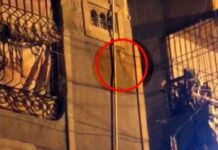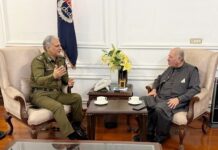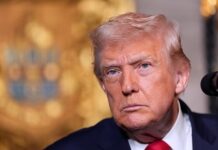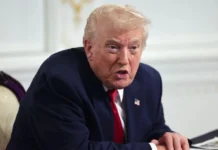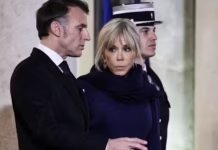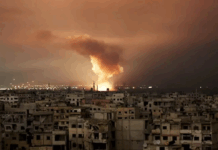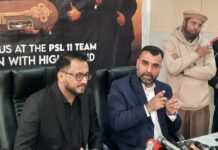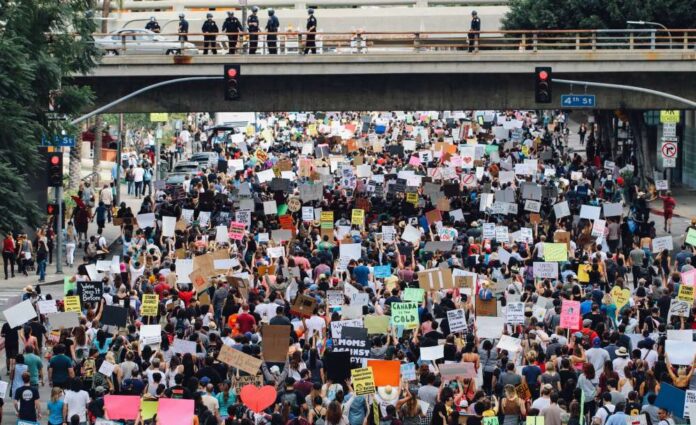In democratic societies considered civilized worldwide, the right to peaceful assembly and protest is fundamental. Nevertheless, governments establish rules and regulations to manage protests in order to preserve public order, ensure citizen safety, and uphold the rule of law. These regulations are designed to strike a balance between the rights of protesters and the broader societal interests.
In the USA, the First Amendment of the Constitution guarantees the rights to peaceful assembly and freedom of speech. However, demonstrations are typically subject to local laws and regulations. Permits are commonly required for large gatherings or activities that could impact public safety or traffic. Law enforcement collaborates with organizers to uphold orderly and peaceful protests. Instances of violence or damage to property may result in arrests and legal repercussions for those involved, while peaceful demonstrators are safeguarded by constitutional rights.
In the United Kingdom, the right to protest is safeguarded under the Human Rights Act 1998, which incorporates the European Convention on Human Rights into UK legislation. Demonstrations generally require advance notification to the police under the Public Order Act 1986, particularly if they are expected to surpass specified thresholds in terms of size or disruption. Authorities have the authority to impose conditions on protests to prevent disorder, ensure safety, and protect the rights of others. Unlawful assemblies or violent acts can lead to arrests and prosecution under criminal law.
Germany regulates protests under the Basic Law (Grundgesetz) and the Assembly Act (Versammlungsgesetz). While freedom of assembly is protected, organizers are typically required to notify authorities in advance for public demonstrations. Police may impose restrictions or prohibit assemblies if there are concerns about public safety or potential violence. Violent protests or actions that threaten public order can result in arrests and legal consequences. The focus remains on balancing the right to protest with the responsibility to maintain public order and safety.
In Canada, the Canadian Charter of Rights and Freedoms guarantees freedom of peaceful assembly and expression. Public assemblies, including protests, are generally lawful as long as they remain peaceful and comply with legal requirements. Organizers may need permits for large gatherings or protests that could impact public safety or traffic. Law enforcement agencies have the authority to manage protests, ensure public safety, and prevent violence. Individuals engaging in unlawful behaviour during protests may face charges under criminal law.
Australia protects the right to peaceful protest under its Constitution and various state and territory laws. Authorities may require permits for protests in public spaces to manage logistics and ensure public safety. Police have powers to oversee protests, enforce conditions, and prevent disruptions to public order. Acts of violence, vandalism, or obstruction can lead to arrests and prosecution under criminal law. The legal framework aims to strike a balance between the right to protest and the obligation to maintain law and order.
In democratic societies, the right to peaceful protest is a foundational aspect of civic engagement and serves as a potent means of advocating for change. Nevertheless, along with this right comes a set of duties that protesters must fulfil to ensure their actions positively contribute to public discourse and uphold social harmony.
Maintaining peaceful resolution is paramount, as exemplified by numerous instances from around the world.
The People Power Revolution in the Philippines illustrates a non-violent mass movement that ousted a dictator. In February 1986, millions converged at EDSA in Manila, demanding President Ferdinand Marcos’ resignation and supporting military defections, ultimately restoring democracy through peaceful demonstrations and solidarity.
It is unfortunate to witness recent violent protests in several parts of Pakistan and AJK. Inflation and poverty are universal challenges present worldwide. However, the solution to these issues does not lie in resorting to violence against the state and its institutions. Instead, there is a critical need for awareness about the laws and regulations of the country.
The Velvet Revolution in Czechoslovakia further demonstrates the peaceful overthrow of communist rule in Eastern Europe. Beginning in November 1989, mass protests and strikes demanded political reforms and an end to one-party rule, led by dissident figures like Václav Havel. Hundreds of thousands peacefully gathered in Prague’s Wenceslas Square and other cities, contributing to transformative political change. The revolution led to the Communist government’s resignation and paved the way for democratic elections. The Baltic Way was an extraordinary display of non-violent protest involving around two million people across Estonia, Latvia, and Lithuania. On 23 August 23, marking the 50th anniversary of the Molotov-Ribbentrop Pact, citizens of the Baltic states formed a human chain stretching over 600 km from Tallinn to Vilnius. Holding hands and singing national songs, they peacefully expressed their desire for independence from Soviet rule. The Baltic Way endures as a symbol of solidarity and peaceful resistance against oppression.
In Chile, starting from October 2019, a series of massive protests erupted demanding social and economic reforms. Initially sparked by a hike in subway fares, the protests swiftly expanded to encompass broader grievances about inequality, healthcare, education, and constitutional reforms dating back to the Pinochet dictatorship. Millions marched peacefully through the streets of Santiago and other cities, participating in demonstrations for months. Following contested presidential elections in August 2020, Belarus witnessed extensive protests against the longstanding regime of President Alexander Lukashenko. Known as the “Revolution of Dignity,” demonstrators peacefully assembled in Minsk and other cities, advocating for fair elections, respect for human rights, and an end to authoritarian governance. The demonstrations upheld a commitment to non-violence.
In contrast, the situation in Pakistan diverges significantly from more orderly societies. Unfortunately, Pakistan has experienced several instances of violent protests in recent years. These protests, characterized by their intensity and occasional outbreaks of violence, highlight underlying complexities within Pakistani society and the challenges of addressing these issues through peaceful means. Incidents of violent protests often resulted in casualties and injuries among protesters, law enforcement personnel, and bystanders.
The loss of life and physical harm underscores the seriousness and potential dangers associated with escalated demonstrations. Blockades of roads, acts of vandalism, and damage to public and private property disrupt daily life and essential services. Such disruptions affect businesses, schools, and transportation networks, impacting livelihoods and economic stability. Persistent incidents of violent protests can exacerbate political polarization and deepen social divisions within Pakistani society.
Debates surrounding the legitimacy of protests, responses by authorities, and media coverage can further heighten tensions. Continued unrest and violence may also deter both domestic and foreign investment, potentially stalling economic growth and developmental initiatives. Stability and predictability are critical for sustained economic progress.
It is important to note that Pakistan has laws and regulations designed to protect lives and property, and stringent measures are in place to address instances of violence. These include provisions such as, Obstructing public way (Section 283 PPC), Wrongful restraint or confinement (Section 342 PPC), Criminal intimidation (Section 506 PPC), Assault or violence (Sections 322, 323, 324 PPC), Unlawful assembly or rioting (Sections 141-149 PPC), Causing hurt or grievous hurt (Sections 319-338 PPC), Wrongful occupation of public space or land (Section 297 PPC), Encroachment on public roads or spaces (Section 297 PPC), Creating public nuisance (Section 290 PPC) and Disobeying lawful orders (Section 188 PPC) etc. These offences related to obstruction of public pathways are punishable under the Pakistan Penal Code (PPC) and the Code of Criminal Procedure (CrPC), allowing police to arrest suspects without a warrant for these offences.
Unfortunately, many people in Pakistan are unaware of these laws, and leaders who are aware often fail to educate the public about them. Leaders of violent protests in Pakistan exploit this lack of awareness among the populace, using them as human shields and leveraging their grievances to manipulate the government for personal gain. It is crucially evident that, despite having all the necessary laws and regulations in place, the State and law enforcement agencies are displaying leniency towards violent elements.
In Pakistan, protests frequently occur without obtaining official permissions from the government. In contrast, many democratic nations considered civilized uphold the right to peaceful protest as a fundamental aspect of freedom of expression. However, to ensure public safety, maintain order, and uphold the rights of all citizens, protesters often must obtain permission or notify authorities before organizing demonstrations.
In the USA, the First Amendment guarantees the right to peaceful assembly and freedom of speech. While spontaneous demonstrations or small gatherings may not always require permits, organizers typically seek permits for larger protests that could impact public safety or traffic. Permits are typically issued by local authorities, such as city governments or police departments, to ensure demonstrations proceed peacefully and orderly. This process generally involves submitting an application detailing the planned location, timing, and expected number of participants. Authorities may impose conditions to ensure public safety, such as specifying march routes or setting time limits for protests.
It is unfortunate to witness recent violent protests in several parts of Pakistan and AJK. Inflation and poverty are universal challenges present worldwide. However, the solution to these issues does not lie in resorting to violence against the state and its institutions. Instead, there is a critical need for awareness about the laws and regulations of the country. By understanding and adhering to these laws, individuals can avoid actions that harm the country, its people, assets, and properties, contributing instead to constructive dialogue and lawful means of addressing societal concerns.






